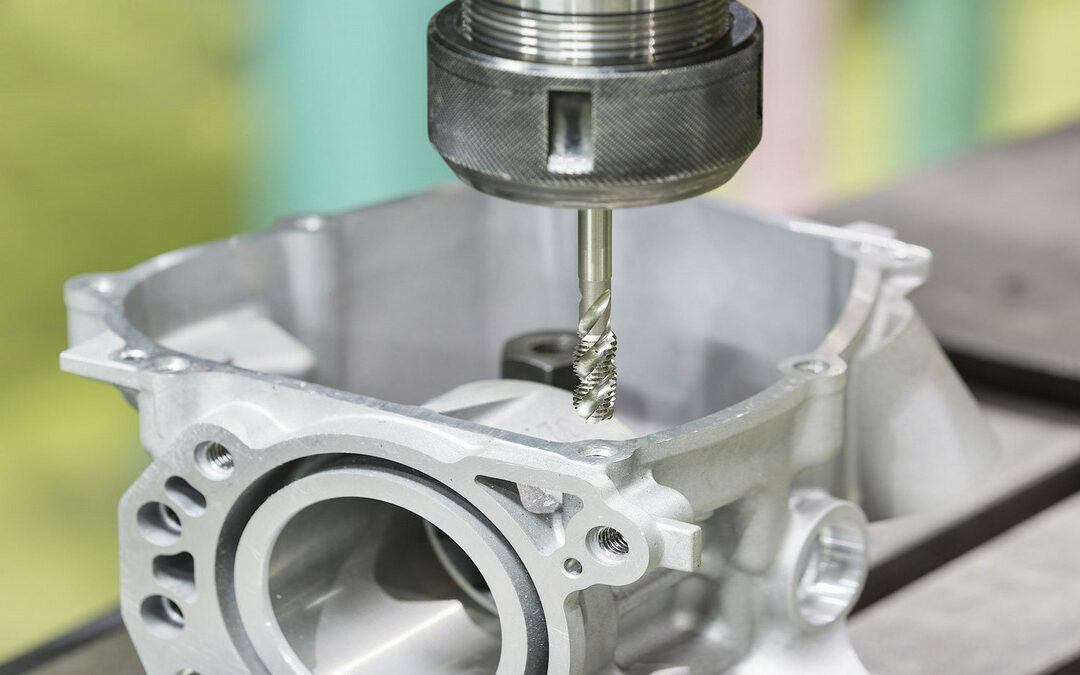CNC machining is a highly utilized subtractive manufacturing technique. The computer numerical control system requires less manpower and has a higher degree of automation. One of the automated manufacturing methods is CNC milling. This is a process in which a rotary tool removes material, which makes it the opposite of CNC turning. Milling centers not only automate cutting but also tool changes. For example, in the average process of manufacturing a finished product from a piece of metal, various milling tools are used.
What are the Types of Milling Cutters?
- End mills: These tools usually have a flat bottom, and round and fillet cutters are also available. End mills are similar to drills in that they can cut axially. But milling has the advantage of being able to make transverse cuts. End mills are widely used and efficient cutting tools. It can be milled and trimmed at high speed, suitable for workpieces or other mold processing.
- Face milling cutter: Face milling cutter cannot cut axially. The opposite cutting edge is always on the side of the cutting head. The cutters are replaceable carbide inserts. This allows the tool to last longer while maintaining good cutting quality. The face milling cutter is used for plane cutting on a large area, suitable for semi-machining, finishing, roughing, and other manufacturing production methods, showing stable high efficiency and excellent machining performance in processing.
- Ball Knife: Ball Knife, also known as Ball Mill, has a hemispherical cutting tip. The goal is to keep the corner radii of the vertical faces. Widely used in R angle processing, surface processing, etc.
Slab mill milling cutter: Slab milling machines are not common in modern CNC machining centers. Instead, they are still used with manual milling machines to quickly machine large surfaces. Therefore, slab milling is often referred to as surface milling. The plate itself rotates in a horizontal position between the spindle and the bracket. - Side cutter: The predecessor of the end mill. Side and face mills have teeth on the circumference and one side. This makes for similar functionality to end mills, but their popularity has waned over the years as other technologies have advanced.
- Involute gear tool: There is a special tool for milling involute gears. Different tools can be used to produce gears within a certain number of teeth. Involute and cycloid are mainly used to design the shape of gears and racks.
- Flying cutter: Flying cutter has the same function as a face milling cutter. They consist of a central body that accommodates one or two tool bits (double-ended fly cutters). Face mills are better for high-quality cuts. A fly cutter is a single-point rotary cutting tool primarily used on milling machines for machining large and flat surfaces. Flying cutters consist of a body into which one or two tool bits are inserted. Most flying knives have a bracket, pull screw, thrust washer, and left-hand carbide cutting tool.
- Hollow sharpening: Hollow milling cutters are the opposite of face milling cutters. The workpiece is fed into the interior of the mill to produce cylindrical results.
- Roughing end mills: These are much all end mills, but with a little difference. Roughing end mills have serrated teeth. These make the cutting process faster than ordinary end mills. The cut metal pieces are smaller than usual, making them easier to clean up. Multiple teeth are in contact with the workpiece at the same time. This reduces chatter and vibration that might otherwise be greater due to the serrated teeth.
- Half-edge cutter: Half-circle or key seat/keyway cutters are used to cut keyways into parts, such as shafts. The cutting tool has teeth perpendicular to the outside diameter to create a groove that fits a semicircular key.
- Thread milling cutter: A thread milling cutter is used to produce threaded holes. Threading is usually carried out on drilling equipment. But using a thread mill is more stable and less restrictive to the environment. A tool that uses thread feed to machine threads. It has excellent wear resistance and is coated on the tapping tool to improve the service life. A tool that uses the screw feed function of a machining center or CNC machining center to process threads.
Read more: What are a Milling Cutter and its Classification?





